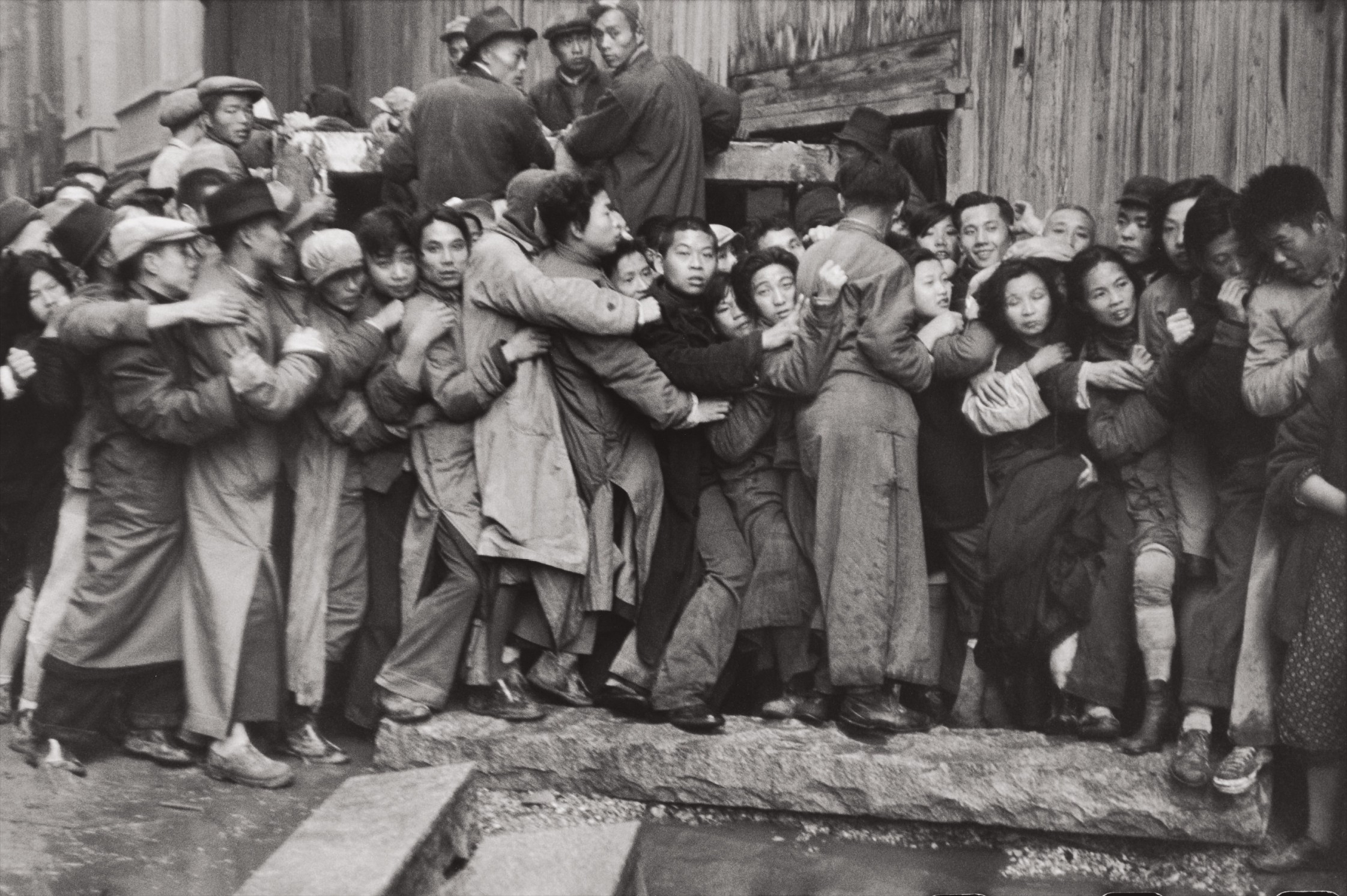

86
Henri Cartier-Bresson
The Last Days of the Kuomintang (market crash), Shanghai, China
Full-Cataloguing
Henri Cartier-Bresson traveled to China for LIFE magazine twice, in 1948 and 1958, each time deftly capturing with a humanist eye the country at a time of political and economic change. On his first trip, which occurred late-1948 to early-1949, Cartier-Bresson witnessed and documented the conclusion of the civil war between the Nationalist Party of China (also known as the Kuomintang) and the Communist Party of China lead by Mao Zedong. Ten years later, on his second trip in 1958, he completed an extensive four month, 7,000 mile tour of the country at the beginning of the Communist campaign, The Great Leap Forward. Based upon the USSR’s Five-Year Plan, this economic and social agenda included agricultural collectivization and rapid industrialization for its largely rural, agrarian population. “With the perceptiveness for which he is famous,” LIFE declared, “Cartier-Bresson has shown how the Chinese individually react and live amid the oppressive regimentation imposed on them.” Indeed, throughout Cartier-Bresson’s career it is his warm personal perspective that infuses his photographs with respect for all humankind.
Henri Cartier-Bresson
French | B. 1908 D. 2004Candidly capturing fleeting moments of beauty among the seemingly ordinary happenings of daily life, Henri Cartier-Bresson's work is intuitive and observational. Initially influenced by the Surrealists' "aimless walks of discovery," he began shooting on his Leica while traveling through Europe in 1932, revealing the hidden drama and idiosyncrasy in the everyday and mundane. The hand-held Leica allowed him ease of movement while attracting minimal notice as he wandered in foreign lands, taking images that matched his bohemian spontaneity with his painterly sense of composition.
Cartier-Bresson did not plan or arrange his photographs. His practice was to release the shutter at the moment his instincts told him the scene before him was in perfect balance. This he later famously titled "the decisive moment" — a concept that would influence photographers throughout the twentieth century.